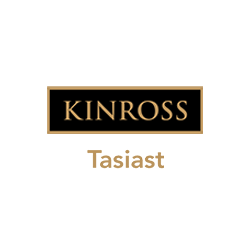Play Video
Mauritania has significant reserves of natural resources, especially hydrocarbons and precious metals. The progress made by Mauritania in the Doing Business ranking published annually by the World Bank has enabled the country to attract some of the largest investors in
the field of extractive industries, such as the leading Canadian operators in the exploitation of gold Kinross Gold, First Quantum, Aya Gold & Silver, in addition to the five largest energy companies in the world: Total, BP, Kosmos Energy, Shell and Exxon Mobil. During 2020, the contribution of extractive industries activities reached 24.2% of GDP, the highest in Mauritania, promoting a
growth of the sector of 35.5% due to a remarkable rise in
gold and iron during the last period.


The extractive industries are divided into two essential sectors:
- Mines: Mining is today the most important component in the field of extractive industries in Mauritania, with more than 60 national and foreign companies, in particular:
- Hydrocarbons: Mauritania has areas rich in oil and gas resources, particularly in the Taoudenni basin and the Mauritanian coastal basin. Seismic surveys in the coastal basin carried out over the past twenty years have led to the discovery of several oil and gas deposits. These discoveries have confirmed, to date, the existence of significant natural gas reserves in the order of 65 trillion cubic feet of gas, including 15 at the level of the Grand Tortue Ahmeyim (GTA) field, shared between Mauritania and Senegal, and 50 for the Biralla deposit, specific to Mauritania.
-The National Industrial and Mining Company (SNIM) which exploits iron deposits in the northern region of Tiris Zemmour, with a production which reached 13 million tons per year.
-The company Mauritanian Copper Mines (MCM) in the region of Inchiri, which produces 29 million tons of copper per year.
-The company Tasiast Mauritania, which operates the gold mine in Tasiast in the northern region of Dakhlet- Nouadhibou, with an average annual production of 11,5 million tons.
THE LEGAL FRAMEWORK FOR INVESTING IN EXTRACTIVE INDUSTRIES IN MAURITANIA
The legal framework organizing the extractive industries sector in Mauritania has undergone great improvements in recent years with the creation and updating of the Mining and Hydrocarbons Codes to bring them into conformity to the development of investments in the field.


TTHE INFRASTRUCTURES REQUIRED FOR EXTRACTIVE INDUSTRIES IN MAURITANIA
- Roads and railways: Mauritania has a 704 km long railway line connecting the iron ore mining sites in the Tiris Zemmour region to the Nouadhibou mineral port from where the iron is exported to international markets. It also has a comprehensive road network connecting the mining areas of Inchiri, Dakhlet-Nouadhibou and Trarza to seaports along the Atlantic coast to facilitate export operations. A state of the art international airport has also recently been built near Nouakchott.
- Ports: 2 seaports have been built in the past five years, the first in the Tanit area, close to gold and copper mining sites in the regions of Inchiri and Dakhlet- Nouadhibou, and the second in N’Diago, in the region of Trarza. The port of Nouakchott has been expanded to enhance its capacities.
- Telecommunications: Mauritania has developed, in recent years, an integrated infrastructure in the field of communications which meets international standards.
The country is connected to Europe and coastal African countries by an optical fiber submarine cable.
- Electricity and distribution networks: Electricity production capacity in Mauritania has reached high levels in recent years with the inauguration of 6 large power plants in Nouakchott and the strengthening of the production capacity of all power stations in the other cities.







